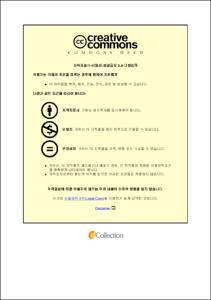Effects of Biofloc Feeding on the Juvenile Growth and Survival of the Rockworm Marphysa sanguinea (Polychaeta: Eunicidae)
- Alternative Title
- 바위털갯지렁이 치충의 성장과 생존에 미치는 바이오플락 급이의 영향
- Abstract
- Marphysa sanguinea (Montagu, 1815) (Polychaeta: Eunicidae), one of the economically valuable species, has been increasing in demand not only for fishing bait but also for live-feed resources of fin fish and shrimp. The aim of this study is to identify the effects of biofloc feeding on productivity in the juvenile stage of the rockworm. Two biofloc feeding experiments were conducted for six months on juveniles of M. sanguinea at Fisheries Science and Technology Center (FSTC), Pukyong National University.
The first experiment with biofloc feeding was carried out on seven different feeding quantities (3% of total body weight) with three replicates of small acrylic tanks. Biofloc was fed everyday with molasses and shrimp feed powder with 50% of crude protein for a C/N ratio of 25. The stocking density was 50 inds per an acrylic tank with a circumference of 47.13 cm. These 3 acrylic tanks were put into a yellow plastic experimental box. As each acrylic tank contained 50 individuals, each yellow box had 150 worms in 3 acrylic tanks. Seven yellow boxes were prepared, where worms were fed on seven different quantities. Different feeding quantities were 0.11, 0.22, 0.45, 0.90, 1.80, 3.60 and 7.20 g, respectively. Worms were at a mean initial weight of 0.052 ± 0.02 g. During the experimental period, the worms were measured every month. After 3 months of rearing, biofloc technology application was shown to offer benefits in improving aquaculture production, which could contribute to the achievement of sustainable development.
The results demonstrated that the treatment of 3.6 g (0.86 ± 0.08%) had a significantly lower specific growth rate along with 0.9 g (0.98 ± 0.31%), 1.8 g (0.96 ± 0.23%), 7.2 g (1.16 ± 0.25%) than that of 0.11 g (1.32 ± 0.19%), 0.22 g (1.34 ± 0.18%) and 0.45g (1.31 ± 0.15%) and that no significant difference was observed at survival rates.
After the first experiment, the second experiment was designed on the raceway system to find the effect of biofloc feeding on juveniles of M. sanguinea. The raceway system had a dimension of L 3.16 m x W 30 cm x H 20 cm. In these raceway systems, two raceways were for artificial feeding, two for biofloc feeding with water outlet, and two for biofloc feeding without water outlet at the bottom. Each raceway was divided into eight sections. The culture tank was 30 tons. During the first month, biofloc was fed everyday with molasses and shrimp feed powder for 50% crude protein with a C/N ratio of 30. In the first month, biofloc was fed 90 L/day for fifteen minutes, and artificial feeding was 7.2 g/day for large worms and 9.6 g/day for small ones. For the second month, 2 ton of biofloc culture was fed everyday with glucose and shrimp feed powder with 50% of crude protein for a C/N ratio of 25. Biofloc feeding was 135L/day at forty five minutes, and artificial feeding was 7.2 g/2 times/day for large worms and 9.6 g/2 times/day for small ones. For large worms, the stocking density was 300 inds/section in two raceways of biofloc feeding and one raceway of artificial feeding. For small ones, 400 inds/sections were in two raceways of biofloc feeding and in one raceway of artificial feeding. The mean initial weight of large worms was 0.144 ± 0.039 g and small ones were 0.041 ± 0.004 g. Through the experimental period, worms were measured every 2 weeks. After 3 months of rearing, large worms on 0.45 ± 0.32 g of artificial feed showed a higher growth than those on 0.12 ± 0.1 g of biofloc feed, and small worms on 1.22 ± 0.67 g of artificial feed showed a higher growth than those on 0.48 ±0.37 g of biofloc feed. The results showed that artificial feed was effective than biofloc feed. All of these results showed that effects of feeding on growth were very dependent on feeding quantities and environmental condition. Another possibility that may have affected the appetite could be un-ionized ammonia and nitrite levels, which were closely related to environmental conditions. Therefore, further studies are required to manage a good environment for biofloc feeding.
- Issued Date
- 2018
- Awarded Date
- 2018. 8
- Type
- Dissertation
- Publisher
- 부경대학교
- Affiliation
- 부경대학교 대학원
- Department
- 대학원 수산생물학과
- Advisor
- 김창훈
- Table Of Contents
- 1. Introduction 1
2. Materials and methods 5
2.1 Design of experiments 5
2.2 Physiochemical biofloc water quality analysis 19
2.3 Data collection 20
2.4 Statistical analysis 23
3. Results 24
3.1 Effect of different feeding quantities on survival (%) of worms 24
3.2 Effect of different feeding quantities on specific growth rate (%/day) of worms 25
3.3 Survival rate (%) of juveniles (small and large size) at two different feeding types of artificial (AF) and
biofloc feeding (BF) for week interval 27
3.4 Specific growth rate (%/day) of juveniles at two different feeding types of artificial (AF) and biofloc feeding (BF) for week interval 29
3.5 Water quality analysis for different feeding quantities 31
3.6 Water quality analysis for two different types of feeding 32
4. Discussion and Conclusion 36
References 42
Acknowledgment 48
- Degree
- Master
- Files in This Item:
-
-
Download
 Effects of Biofloc Feeding on the Juvenile Growth and Survival of the Rockworm Marphysa sanguinea (.pdf
기타 데이터 / 4.52 MB / Adobe PDF
Effects of Biofloc Feeding on the Juvenile Growth and Survival of the Rockworm Marphysa sanguinea (.pdf
기타 데이터 / 4.52 MB / Adobe PDF
-
Items in Repository are protected by copyright, with all rights reserved, unless otherwise indicated.